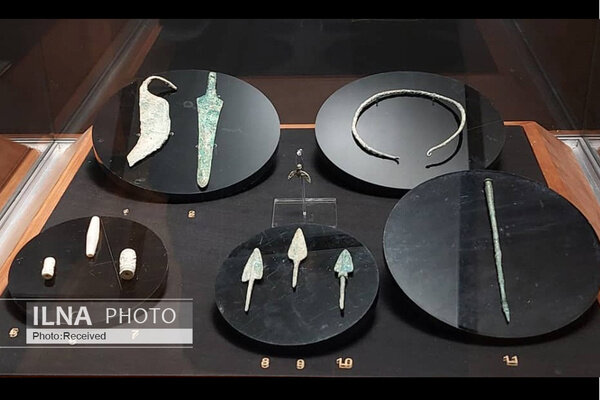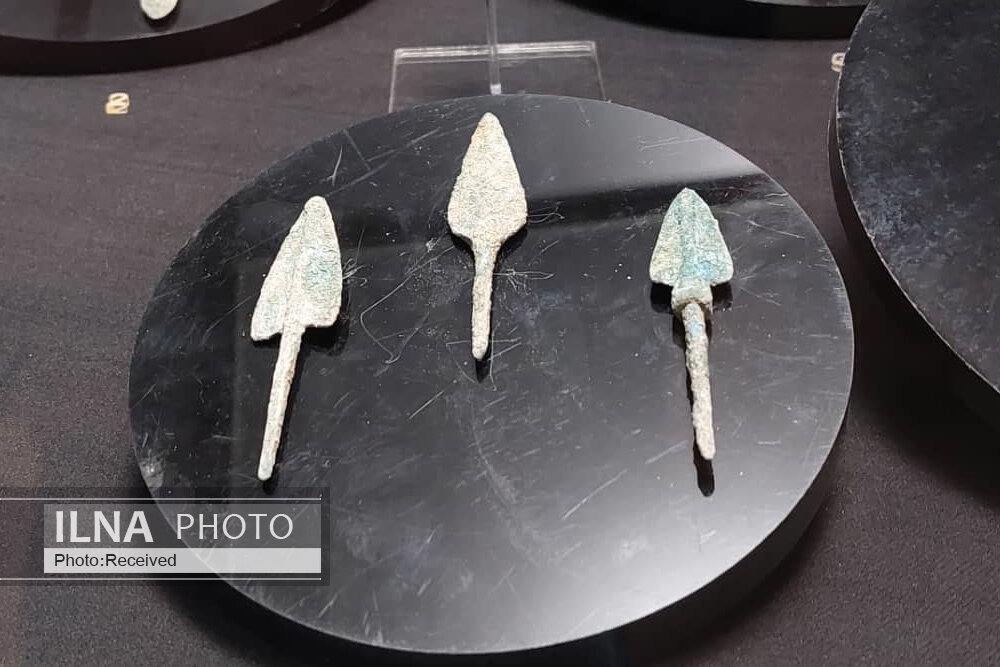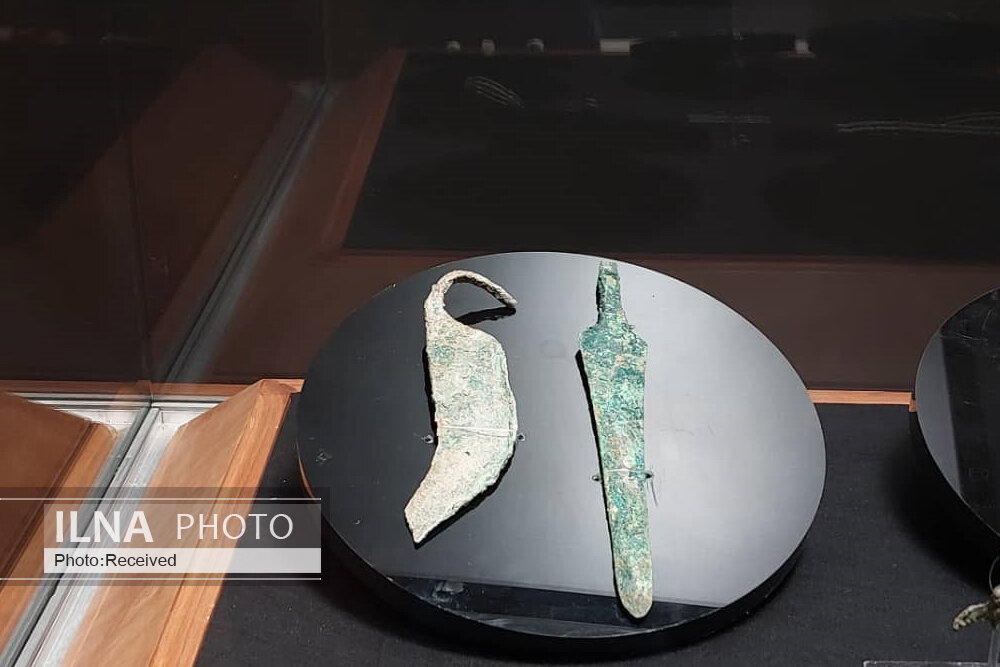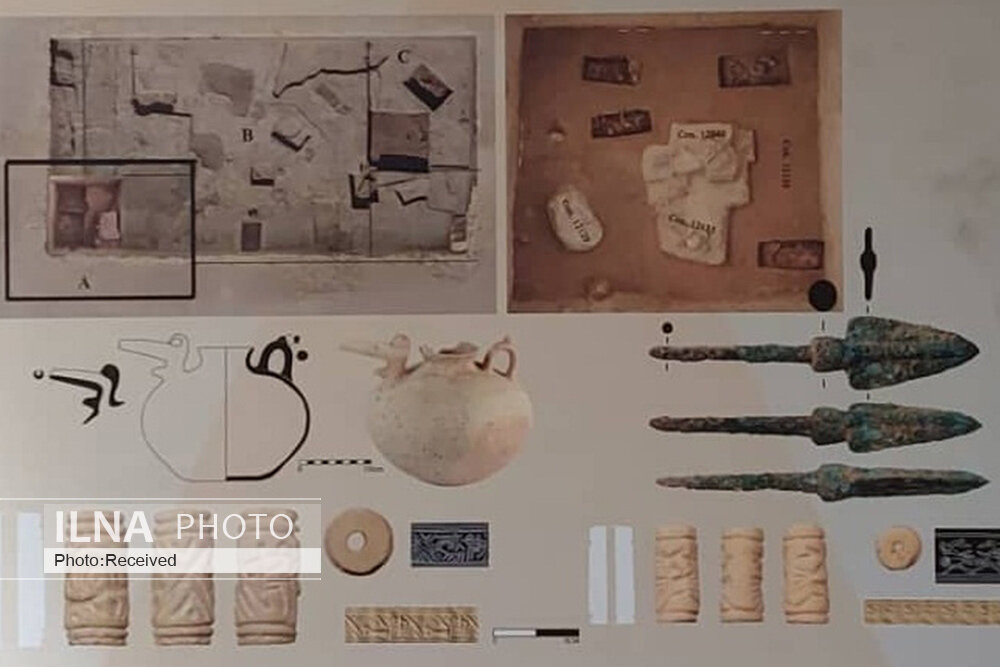Archaeologist elaborates on Iron Age burial chambers

TEHRAN - Mostafa Dehpahlavan, an Iranian archaeologist who is credited with having found a wide variety of Iron Age burial chambers, has recently elaborated on discoveries his team made in Tepe Sagz Abad of Qazvin province.
The head of the archeological board of the fifth season of the archaeological excavation on the site revealed untold stories of 78 graves associated with four burial methods, ILNA reported on Sunday.
Currently, selections of their discoveries including enclosed or brick burials, simple pits, pits in ashes, and pot burials, have been put on show at the National Museum of Iran, the report said.
Dehpahlavan said that enclosed burials or four-layer clay burials were usually designed for single and multi-person. The number of people identified in them sometimes reaches five people, he added.
“In the burials of multiple people, except for one or two skeletons, usually, the burials were left chaotically, and no order could be seen among them.”
This disturbance can be attributed to factors such as landslides, water and flood infiltration, animal destruction, and, in some cases, secondary burials, the expert stated.
“In single-person burials, people are usually placed in the grave in fetal form.”
Moreover, in single-person burials, people are usually placed in a fetal form in the grave, and even in pit burials in ashes, they are often single-person and completely orderly next to a pile of ashes, and no particular disturbance is seen in them. They are in the form of embryos inside the grave, he explained.

“Animal remains such as goats, immature sheep, cows, camels, and horses were found in most of the graves, which indicates that animals were buried next to the dead.”
At the same time, our findings can be classified into three groups in terms of application. The first group includes pottery, the second group includes personal ornaments and decorative objects, and the third group includes objects with special uses, the expert said.
In the pottery group, there are 45 different types of vessels, which are divided into various groups such as bowls, vessels without pipes, piped vessels, and mugs.
The second group includes personal ornaments and decorative items, first of all, beads of different materials and shapes that are related to bracelets and necklaces, such as shells, limestone, glass paste, bronze and stone beads. The second category also includes metal ornaments, bracelets, complete iron and bronze necklaces, and pendants such as rings, bracelets, necklaces, and bronze buttonsThe third group includes objects with special use, which include bronze arrowheads, daggers, and bronze pins, and the most important of them are two cylindrical seals with local and Assyrian styles.
According to Dehpahlavan, absolute dating of the findings was done with the help of the Institute of Archeology at the University of Warsaw, and the results are a confirmation of the relative dating of the Iron Age from 1050 to 820 BC.

Elsewhere in his remarks, the archaeologist said that the findings of this cemetery include ornamental beads made of antimony with a purity of over ninety percent, which shows the complexity of the metalworking workshops of this era.
The scientific results of this project can make an important contribution to clarify the ambiguities of the archaeological knowledge of the Iron Age in the north of the Iranian plateau, he stated.
In June 2022, Iran’s Research Institute for Cultural Heritage and Tourism (RICHT) published a book on the prehistoric pottery culture of Sagz Abad, which is situated in Buin Zahra county of Qazvin province.
Authored by Iranian researcher Mohammad Rahim Saraf, the book explores the collection of painted and simple pottery found during illegal excavations in the ancient area.

The historical site of Tepe Sagz Abad is one of the oldest archaeological sites in the whole world. It was mentioned by Venetian explorer and writer Marco Polo in the 13th century; however, it seems the site is much older than several Iron Age relics have been discovered during several excavations in the region.
Qazvin is also home to one of the biggest roofed caravanserais in the country, Sa’d-al Saltaneh caravanserai. Dating back to the Qajar era, it’s a place for discovering tens of Hojreh shops, cafes, yards, and a stunning mosque. It’s a place for visitors who want to experience the culture, cuisine, and hospitality of Iran.
AFM
